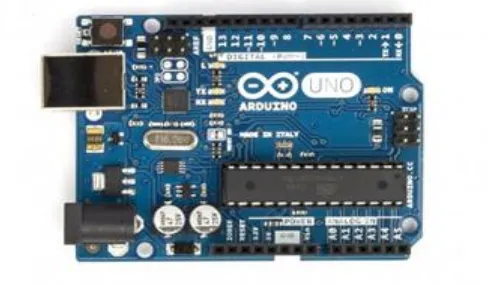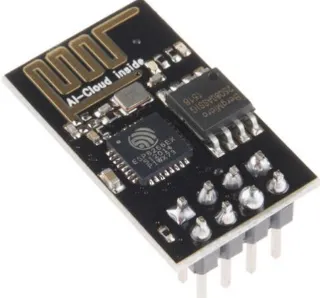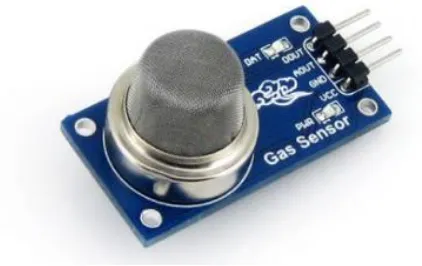© 2019, IRJET | Impact Factor value: 7.211 | ISO 9001:2008 Certified Journal
| Page 1407
Wireless Smoke Detector and Fire Alarm System
Rakshit Shah
1, Pranav Satam
2, Muzaffar Ali Sayyed
3, Pratiksha Salvi
41,2,3,4
Student , Dept. of Computer Engineering, Thakur Polytechnic, Maharashtra, India
---***---Abstract -
Fire is the major cause of accidents claiming valuable lives and property. The chemical reaction between carbon-based materials in presence of oxygen generates flammable vapor causing a steady rise in temperature and results in a fire.The major characteristics of fireside are it extends exponentially with time. Hence, timely detection of fireplace is vital for avoiding a serious accident. In this project, Fire and Smoke detection system is developed. It can sense smoke and the rise in temperature and alert user by activating buzzer also send commands on virtual terminal of android phone through wifi module. Fire hazards are not uncommon. In order to avoid injury from fire accidents, smoke detectors are put in at high-security places. The hardware used is Ardunio Uno, Temperature Sensor, Smoke sensor, Wifi Module and Buzzer. Software used Arduino IDE and V-Terminal used as a mobile application. These smoke discoverors detect smoke because the fire break associated invoke an early alarm. This way, before the fire spreads to different components of the building, people can be evacuated and countermeasures can be done immediately. In this project additionally a smoke detector has been designed. The smoke detector developed during this project not solely invokes associate alarm however additionally activates associate fan in order that smoke may well be removed with immediate action.Keywords: Ardunio, Temperature, Smoke, Wi-FiModule, Buzzer.
1. INTRODUCTION
Fire could be a chemical process of carbon primarily based material that mixes with element and is heated to some extent wherever burnable vapors are made. These vapors then are available contact with one thing that's hot enough to cause vapor ignition and leads to a fireplace and its prevalence is random. Industry, home offices, hospitals etc. Are noticeably susceptible to hearth that has the potential to cause hurt to its occupants and severe harm to property. On a mean, in India, every year, about 25,000 persons die due to fires and related causes where female accounts for about 66%. As per the statistics of National Crime Records Bureau (NCRB), hearth accounts for regarding 5 .9% (23,281) of thetotal deaths according because of natural and unnatural causes throughout the year 2012. The data
accidents in Asian nation reveals that on the brink of three hundred thousand individuals lost their lives in fire accidents between 2001 and 2014, averaging to 59 deaths per day.
The estimate of property loss due to fire crosses about 1000 crores rupees every year. The major characteristics of fireside area unit it extends exponentially with time. Hence, timely detection of fireplace is important for avoiding a serious accident. Hence, the essence of getting a classy hearth alarm and observance system is kind of obvious. The early detection of fire can be made with the rise of temperature, the presence of smoke and flame. Hence applicable sensors got to be put in at the vulnerable places to find the mentioned physical quantities. The alarm information is generated by comparing them with predefined threshold values and send to a central processor that may be a microcontroller.
2. LITERATURE SURVEY
© 2019, IRJET | Impact Factor value: 7.211 | ISO 9001:2008 Certified Journal
| Page 1408
etc. and send it to remote monitoring station through GSMto generate needful instructions for the actuators.
Louie Giglio, Jacques Descloitres, Christopher O. Justice, Yoram J. Kaufman[2] presented an improved fire detection algorithm that offers increased sensitivity to smaller, cooler fires as well as a significantly lower false alarm rate has been presented. The authors made use of the theoretical simulation and high-resolution Advanced Spaceborne Thermal Emission and Reflection Radiometer (ASTER) scenes to establish the performance of their algorithm. A sensor network was used for real-life forest fire detection in (Veskoukis, Olma et al. 2007). Each sensor node was equipped with a GPS and a thermometer. The authors proposed that each sensor node should be mounted on a tree with a height of at least 3.5m. Since the device nodes may be destroyed by hearth, a dynamic routing protocol was proposed. They concluded that a sensor node can sense and transmit data more accurately. In addition, they deduced that if 3 nodes monitor identical location, hearth will a lot of accurately be detected.
In the work done by Angayarkanni. K [4], an efficient forest detection employed to detect forest fires from forest spatial data. This approach makes use of spatial data mining and artificial intelligence techniques for the detection of fires. A fuzzy rule base is created for the detection of fires, from the spatial data with the presence of fires. The digital images are converted to YCbCr color space, and then segmented to identify the fire regions. Lim et al proposed AN innovative framework for residential hearth detection (Lim, Lim et al. 2007). They introduced metric of interval-message-ration (IMR) and evaluated their framework exploitation the IMR metric. They complete that the framework isn't solely applicable for fire-detection however may also be applied for alternative disaster recoveries.
Another paper proposed by Joydeb Roy Chowdhury [5], illustrates a Fuzzy Rule Based Intelligent Security to detect the fire. This paper, analyzes the mechanism of fire-catching process, and implement by using a microprocessor based hardware and intelligent fire recognition software. The author also implemented a fuzzy rule based intelligent early fire detection warning system. The early warning before the fault with none ambiguity will avoid the disaster against the fault taking some preventive measures.
3. OBJECTIVE
A fire or alarm system system are often monitored regionally within the premises, or remotely at an overseas place as per demand. Remote alarm provides the owner of the premise with the advantage of observation from distant location associated taking immediate actions once an emergency message is received, unlike amanual system. With the advancement of human civilization, fire-safety hasbeen a major concern. Fire hazards will be fatal and calumnious for industrial and unit security, conjointly alarming for human life. The best thanks to scale back these losses is to reply to the emergency scenario as fast as potential. So, there comes the need of standalone autonomous fireplace detection systems. These systems render the works of fast detection, alarm notification, and generally initiation of fireside termination. The systems, equipped with smoke, temperature sensors can detect unfavourable accidental situations, as it happens, and with the help of a processing unit can alert instantly for undertaking cautious measures. In these fatal things, early detection and quicker alert can yield lesser losses of property and life.
4. EXISTING SYSTEM
© 2019, IRJET | Impact Factor value: 7.211 | ISO 9001:2008 Certified Journal
| Page 1409
management unit. This new device will report once it's toodirty to perform properly or it's obtaining too sensitive thanks to any number of conditions in the protected space. Analog sensors give AN basically false-alarm-free system from conditions commonly found in buildings. This detector technology conjointly permits the system designer to regulate the sensor's sensitivity to accommodate the atmosphere or use AN extra-sensitive setting to safeguard a high-value or mission-sensitive space. In addition, there is another technique accustomed find smoke that is gas-sensing fire detectors. Many changes occur in the gas content of the setting throughout a hearth. In large-scale fireplace tests, it has been observed that detectable levels of gases are reached after detectable smoke levels and before detectable heat levels. One of two operating principles such as semiconductor and catalytic principle could also be employed in a gas-sensing fireplace detector. Fire-gas detectors of the semiconductor sort answer either oxidizing or reducing gases by making electrical changes within the semiconductor. The subsequent conduction changes of the semiconductor trigger the detector. Meanwhile, fire-gas detectors of the chemical change kind contain a cloth that remains unchanged however accelerates the chemical reaction of flammable gases. The ensuing temperature rise within the part causes detector effort.
5. PROPOSED SYSTEM
Contemporary fire alarm systems use automatic functions to detect the occurrence of an event that may result in a fire.
They receive a sign from a fireplace sensing element (smoke, heat or monoxide detector) and mechanically transmit it to the fireplace alarm panel. In wireless systems, the signal from the detectors to the control panel is transmitted with radio frequency.Heat detectors sometimes have inbuilt thermistors to sense the warmth. Carbon monoxide detectors use integrated chemical, electrochemical, opto-chemical or biomimetic cells to trace the gas. Smoke noticeors use electricity or ionization to detect smoke or combustion particles. Combined detectors use a number of detection mechanisms. The fire alarm panel activates the flashers or the sounders, activates sprinklers (or they will be activated together with the detector), or makes a call to the authorities or to the occupants. If the fireplace alarm is available, the source of the occurrence will be pointed on the control panel. Users on separate floors or in connected buildings may be notified in many ways: by horns, gongs and speaker
system messages advising applicable action for every department.
6. HARDWARE
6.1 Arduino Uno Controller
[image:3.612.332.576.557.699.2]Arduino could be a tool for creating computers that may sense and management a lot of the physical world than your personal computer. It's associate open-source physical computing platform supported an easy microcontroller board, and a development setting for writing code for the board. The Arduino Uno could be a microcontroller board supported the ATmega328. It has fourteen digital input/output pins (of that vi may be used as PWM outputs), 6 analog inputs, a 16 MHz ceramic resonator, a USB connection, a power jack, an ICSP header, and a reset button. It contains everything needed to support the microcontroller; simply connect it to a computer with a USB cable or power it with a AC-to-DC adapter or battery to get started. The Uno differs from all preceding boards in this it doesn't use the FTDI USB-to-serial driver chip. Instead, it options the Atmega16U2 (Atmega8U2 up to version R2) programmed as a USB-to-serial convertor. Revision 2 of the Uno board has a resistor pulling the 8U2 HWB line to ground, making it easier to put into DFU mode. Revision three of the board has the subsequent new features: 1.0 pinout: additional SDA and SCL pins that square measure with reference to the AREF pin and 2 different new pins placed with reference to the RESET pin, the IOREF that allow the shields to adapt to the voltage provided from the board. In future, shields will be compatible with both the board that uses the AVR, which operates with 5V and with the Arduino Due that operates with 3.3V. The other could be a not connected pin, that's reserved for future functions. Stronger RESET circuit. Atmega 16U2 replace the 8U2.
© 2019, IRJET | Impact Factor value: 7.211 | ISO 9001:2008 Certified Journal
| Page 1410
Microcontroller ATmega328
Operating Voltage 5V
Input Voltage
(recommended) 7-12V
Input Voltage (limits) 6-20V
Digital I/O Pins 14 (of which 6 provide PWM
output)
Analog Input Pins 6
DC Current per I/O
Pin 40 mA
DC Current for 3.3V
Pin 50 mA
Flash Memory 32 KB (ATmega328) of which
0.5 KB used by bootloader
SRAM 2 KB (ATmega328)
EEPROM 1 KB (ATmega328)
Clock Speed 16 MHz
Length 68.6 mm
Width 53.4 mm
Weight 25 g
The ESP8266 is a low-cost Wifi chip with full TCP/IP stack and MCU (microcontroller unit) capability produced by Shanghai-based Chinese manufacturer, Espressif Systems. The ESP8266 wireless fidelity Module may be a self-contained SOC with integrated TCP/IP protocol stack that may provide any microcontroller access to your wireless fidelity network. The ESP8266 is capable of either hosting An application or offloading all Wi-Fi networking functions from another application processor. Each ESP8266 module
[image:4.612.369.529.196.345.2]comes pre-programmed with an AT command set computer code, meaning, you can simply hook this up to your Arduino device and get about as much WiFi-ability as a wireless fidelity defend offers (and that’s simply out of the boxThe ESP8266 module is a particularly price effective board with an enormous, and ever growing, community.
Fig. 2. WIFI Module
device, whose output voltage is linearly proportional to the Celsius (Centigrade) temperature. It is used with single power provides, or with and minus provides. +5V provide is provided by mistreatment 7805 regulator IC. When IC senses the temperature, it gives linear voltage as +10.0mV/°C at the Vout pin of IC. This Vout pin is connected to the +V(IN) of A/D Converter. An A/D device operates on the sequent approximation principle. Then, ADC converts this analog voltage into a digital 8-bit code and transmits it at DB0-DB7 pin that is connected to the port three of 89S52 microcontroller. LM35 produces 10mV for each degree of natural process therefore we are able to condition Vin of IC to provide Vout of two.56V for full scale output. So we have set Vref/2 to 1.28. This makes Vout of ADC0804 correspond on to detected temperature. Connect the +Vs Pin to 5v and GND to GND. The output should be connected to the analog input.
6.3
Temperature Sensor
The LM35 is exactness integrated-circuit temperature
6.2
Wifi Module - ESP8266
© 2019, IRJET | Impact Factor value: 7.211 | ISO 9001:2008 Certified Journal
| Page 1411
Fig. 3. Temparture Sensor [image:5.612.56.267.491.624.2]This monoxide (CO) gas detector detects the concentrations of CO is within the air and offers output reading within the variety of an analog voltage. The detector will live concentrations of ten ppm to ten,000 ppm. The detector consumes but a hundred and fifty mA at 5V. Connecting 5 volts across the heating (H) pins keeps the detector hot enough to operate properly. Connecting 5 volts at either the A or B pins causes the detector to emit an analog voltage on the opposite pins. A resistive load in the middle of the output pins and ground sets the sensitivity of the detector. The resistive load ought to be mark for your particular application mistreatment the equations within the datasheet, however a decent beginning worth for the resistance is ten kΩ.
Fig 4. Smoke Detector
7. WORKING
● In this project a fire and smoke detection system
is designed and developed using arduino controller.
● The arduino controller act as a main controller of
system, Temperature sensor is used to detect rise in temperature and smoke sensor is used to detect the smoke. Buzzer act as an alarm and Wifi module is used to create the wireless communication between android phone and controller.
● Initially temperature sensor will continuously
check the rise in temperature and smoke sensor wil check if smoke is detected.
● The values from this sensors will be given to
controller. If smoke is detected or there is rise in the temperature then the sensor information is given to controller and controller will give alert by activating buzzer.
● Also the controller will send command to virtual terminal of android phone about the fire and smoke detection through the wifi module.
Interconnection between multiple system.
Android application for the system to control it either automatic or manually.
Different Gas Sensor can be used.
9. CONCLUSION
Smoke detectors are great because they save lives. You should place a smoke detector a certain inches far from a wall. Smoke detectors must always be associate exceedingly house or an housing. There are totally different shapes of smoke detectors, however those that area unit a circle form are those who are in most homes. There also are smoke detectors formed as noses, to smell for smoke. There should be a minimum of two or three smoke detectors in your home. You should install a smoke detector on each floor of a house. Always have a smoke detector and fire alarm system in your home for your own safety
10. REFERENCES
1) SaumyaTiwari ,ShuvabrataBandyopadhyay ,”IoT
Based Fire Alarm and Monitoring System”
,International Journal of Innovations &
Advancement in Computer Science IJIACS ISSN 2347 – 8616 Volume 6, Issue 9 September 2017
2) R.Divya, D.Maheshwari ,”A Novel Fire Detection
System using Image Processing and Artificial
Intelligence Techniques” ,International
6.4
Smoke Detector
8.
FUTURE SCOPE
© 2019, IRJET | Impact Factor value: 7.211 | ISO 9001:2008 Certified Journal
| Page 1412
Conference on Emerging Technology Trends onAdvanced Engineering Research (ICETT’12). 3) Louis Giglio, Jacques Descloitres, Christopher O.
Justice, Yoram J. Kaufman, "An Enhanced Contextual Fire Detection Algorithm for MODIS", Remote Sensing of Environment, vol. 87, pp. 73– 282, 2003.
4) K.Angayarkanni,N.Radhakrishnan,"Efficient Forest
Fire Detection System: A Spatial Data Mining and Image Processing Based Approach",IJCSNS International Journal of Computer Science and Network Security, VOL.9 No.3, March 2009.
5) Joydeb Roy Choudhury, Tribeni Prasad Banerjee,
Swagatam Das, Ajith Abraham and VáclavSnášel, "Fuzzy Rule Based Intelligent Security and Fire Detector System",Computational Intelligence in Security for Information Systems Advances in Intelligent and Soft Computing, 2009, Volume 63/2009, 45-51, DOI: 10.1007/978-3-642-04091-7_6 .
6)
http://electrobist.com/product/lm35-temperature-sensor/


